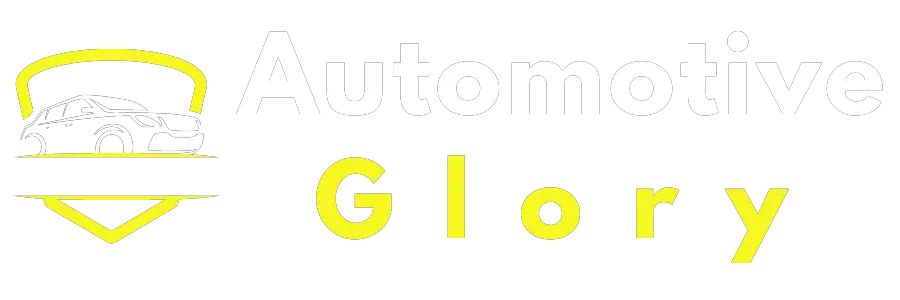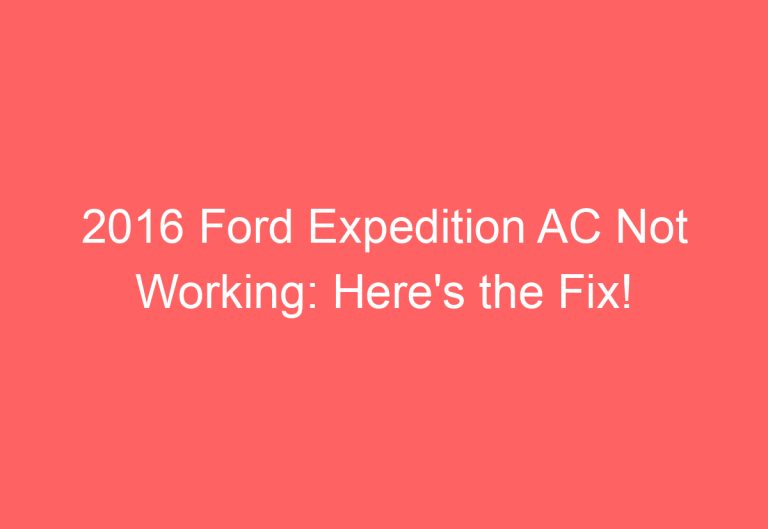1999 Ford Expedition Fuel Gauge Not Working [Cause & Proven Fixes]
Your 1999 Ford Expedition’s fuel gauge is not working properly. This can be a frustrating and inconvenient problem, as you may not know how much gas is in the tank. It can also be dangerous, as you may run out of gas unexpectedly. In this guide, we will walk you through the steps to troubleshoot the problem and get your fuel gauge working again.
Why 1999 Ford Expedition Fuel Gauge Not Working
Bad Fuel Level Sensor
The fuel level sensor sends a signal to the instrument cluster, which displays the fuel level. If the fuel level sensor is bad, it will not send a signal to the instrument cluster, and the fuel gauge will not work.
Bad Instrument Cluster
The instrument cluster is responsible for displaying the fuel level, among other things. If the instrument cluster is bad, it will not be able to display the fuel level, even if the fuel level sensor is working properly.
Wiring Problems
The wiring between the fuel level sensor and the instrument cluster can be damaged or corroded, which can prevent the signal from being sent from the sensor to the instrument cluster.
Bad Ground
The fuel level sensor needs a good ground in order to function properly. If the ground is bad, the sensor will not be able to send a signal to the instrument cluster.
1999 Ford Expedition Fuel Gauge Not Working
Symptoms of a Bad Fuel Gauge
There are a few different symptoms that can indicate that your 1999 Ford Expedition’s fuel gauge is not working properly. These include:
The fuel gauge needle does not move when you fill up the tank.
The fuel gauge needle does not move when you turn the key to the On position.
The fuel gauge needle is stuck at a certain level, even if you have added or removed fuel.
The fuel gauge needle fluctuates wildly, even when you are not driving.
Causes of a Bad Fuel Gauge
There are a number of different things that can cause a fuel gauge to malfunction. These include:
A faulty fuel sender unit. The fuel sender unit is a sensor that sends a signal to the fuel gauge, telling it how much fuel is in the tank. If the fuel sender unit is faulty, it can send the wrong signal to the fuel gauge, causing it to malfunction.
A faulty fuel gauge. The fuel gauge itself can also malfunction, causing it to display incorrect readings.
A problem with the wiring between the fuel sender unit and the fuel gauge. If the wiring is damaged or corroded, it can prevent the fuel gauge from receiving a signal from the fuel sender unit, causing it to malfunction.
How to Troubleshoot a Bad Fuel Gauge
If you suspect that your 1999 Ford Expedition’s fuel gauge is not working properly, you can troubleshoot the problem yourself using the following steps:
1. Check the fuel level indicator light:
If the fuel level indicator light is on, it means that the fuel tank is low on fuel. This could be a sign that the fuel gauge is not working properly, but it could also be a sign that you simply need to add more fuel.
2. Check the fuel sender unit:
The fuel sender unit is located in the fuel tank. To check the fuel sender unit, you will need to remove the fuel tank. Once the fuel tank is removed, you can inspect the fuel sender unit for damage. If the fuel sender unit is damaged, it will need to be replaced.3. Check the fuel gauge:
To check the fuel gauge, you will need to disconnect the wiring harness from the fuel gauge. Once the wiring harness is disconnected, you can use a multimeter to test the fuel gauge for continuity. If the fuel gauge does not have continuity, it will need to be replaced.
4. Check the wiring between the fuel sender unit and the fuel gauge:
To check the wiring between the fuel sender unit and the fuel gauge, you will need to use a multimeter to test the wiring for continuity. If the wiring is damaged or corroded, it will need to be repaired or replaced.
How to Replace a Fuel Gauge
If you determine that the fuel gauge in your 1999 Ford Expedition needs to be replaced, you can do so yourself using the following steps:
1. Disconnect the negative battery terminal:
This will prevent any electrical shorts from occurring while you are working on the fuel gauge.
2. Remove the fuel tank:
The fuel tank is located in the rear of the vehicle. To remove the fuel tank, you will need to remove the fuel tank straps, the fuel filler neck, and the fuel line.3. Remove the fuel sender unit:
The fuel sender unit is located in the fuel tank. To remove the fuel sender unit, you will need to remove the fuel tank. Once the fuel tank is removed, you can disconnect the wiring harness from the fuel sender unit and remove the fuel sender unit from the fuel tank.
4. Install the new fuel gauge:
To install the new fuel gauge, you will need to reverse the steps you took to remove the old fuel gauge.
5. Reconnect the negative battery terminal:
6. Fill the fuel tank:
Once you have replaced the fuel gauge, you should test the fuel gauge to make sure that it is working properly. You can do this by turning the key to the On position and watching the fuel gauge. The fuel gauge should move when you add or remove fuel.
Also Read: 1999 Ford Expedition Heat Not Working
FAQs: 1999 Ford Expedition Fuel Gauge Not Working
What could be causing my 1999 Ford Expedition fuel gauge not to work?
There are a few possible causes for a 1999 Ford Expedition fuel gauge not to work. These include:
A faulty fuel sending unit
A faulty fuel pump
A faulty fuel filter
A problem with the wiring to the fuel gauge
A problem with the instrument cluster
How can I check if the fuel sending unit is faulty?
To check if the fuel sending unit is faulty, you can do the following:
1. Turn off the engine and allow the vehicle to cool down.
2. Remove the fuel tank filler cap.
3. Locate the fuel sending unit on the bottom of the fuel tank.
4. Disconnect the electrical connector from the fuel sending unit.
5. Use a multimeter to check for continuity between the two terminals on the fuel sending unit connector.
If there is no continuity, the fuel sending unit is faulty and will need to be replaced.
How can I check if the fuel pump is faulty?
To check if the fuel pump is faulty, you can do the following:
1. Turn off the engine and allow the vehicle to cool down.
2. Remove the fuel tank filler cap.
3. Locate the fuel pump relay under the hood.
4. Disconnect the electrical connector from the fuel pump relay.
5. Use a multimeter to check for voltage at the fuel pump relay connector.
If there is no voltage, the fuel pump relay is faulty and will need to be replaced. If there is voltage, but the fuel pump is not running, the fuel pump is faulty and will need to be replaced.
How can I check if the fuel filter is faulty?
To check if the fuel filter is faulty, you can do the following:
1. Turn off the engine and allow the vehicle to cool down.
2. Locate the fuel filter under the hood.
3. Disconnect the fuel line from the fuel filter.
4. Start the engine and allow it to run for a few seconds.
5. If the engine dies, the fuel filter is faulty and will need to be replaced.
How can I check the wiring to the fuel gauge?
To check the wiring to the fuel gauge, you can do the following:
1. Turn off the engine and allow the vehicle to cool down.
2. Locate the fuel gauge wiring harness under the dash.
3. Disconnect the wiring harness from the fuel gauge.
4. Use a multimeter to check for continuity between the two terminals on the fuel gauge connector.
If there is no continuity, the wiring to the fuel gauge is faulty and will need to be repaired or replaced.
How can I check the instrument cluster?
To check the instrument cluster, you can do the following:
1. Turn off the engine and allow the vehicle to cool down.
2. Remove the instrument cluster from the dashboard.
3. Inspect the instrument cluster for damage.
4. Use a multimeter to check for voltage at the various terminals on the instrument cluster.
If there is no voltage, the instrument cluster is faulty and will need to be replaced.



![2000 Ford Expedition Ac Not Working [How To Fix It Instantly]](https://automotiveglory.com/wp-content/uploads/2024/05/2000-ford-expedition-ac-not-working-how-to-fix-it-instantly_6406-768x529.jpg)

![2008 Ford Expedition Heated Seats Not Working [Fix It For Good]](https://automotiveglory.com/wp-content/uploads/2024/05/2008-ford-expedition-heated-seats-not-working-fix-it-for-good_6466-768x529.jpg)
